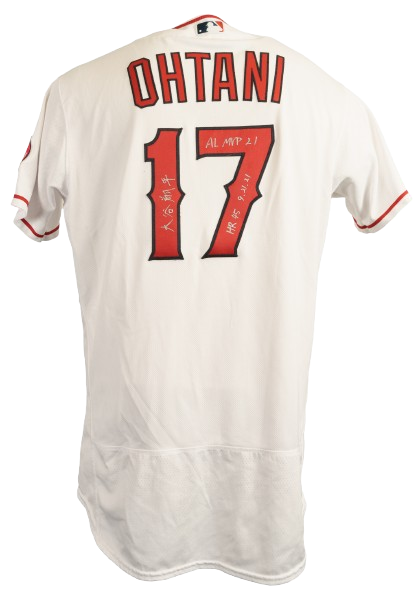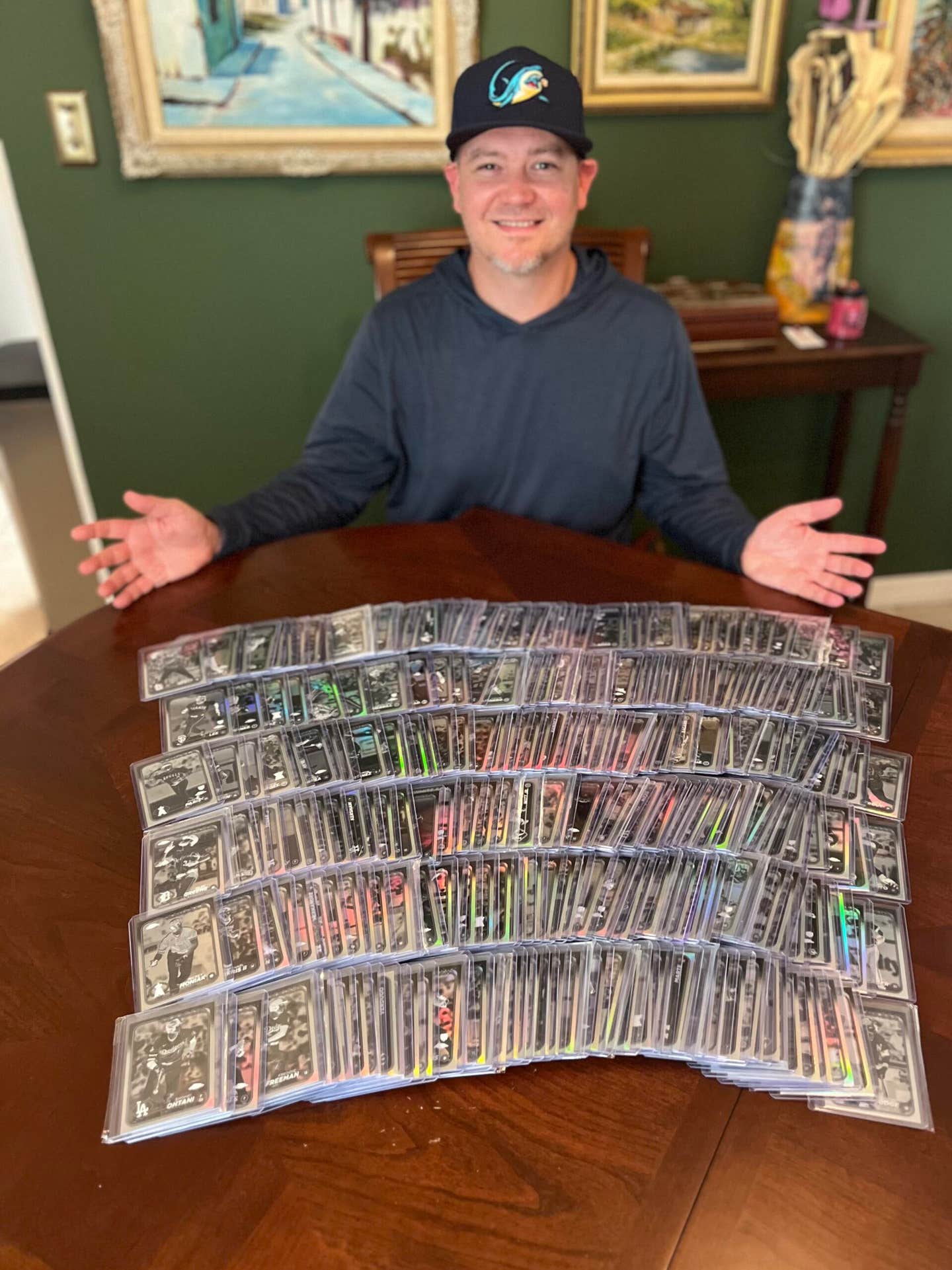The tagging found on the tail of today’s Reebok supplied NFL game jerseys is fairly nondescript. However, jersey tagging wasn’t always so bland.
The long-extinct MacGregor/Sand-Knit Co. supplied a significant amount of game jerseys to the NFL in the 1970s through early 1990s. In many of those cases, Sand-Knit was the exclusive supplier to a specific team and would tag its game jerseys accordingly. For example, the Raiders wore Sand-Knit jerseys for most, but not all, of the team’s tenure in Los Angeles during the 1980s. Those jerseys sported a double tag system: the first part reading Designed & Tailored Exclusively for the LOS ANGELES RAIDERS-AMERICAN FOOTBALL CONFERENCE along with the Sand-Knit trademark. The second tag displayed the size of the jersey along with the company’s trademark and address of Berlin, Wis., USA.
In addition to Sand-Knit, the 1980s saw NFL game jerseys supplied by Champion, Russell Athletic and Wilson. Unlike the more-descriptive Exclusive Sand-Knit tagging, the branding on Wilson and Russell Athletic tagging was more basic. Of the latter two, the style of Russell Athletic tagging is worth noting. Into 1983, the logo and lettering on Russell tagging was done in gold and black. At some point during the 1983 production run, Russell Athletic changed its tagging colors from gold and black on white to a patriotic red and blue on a white background. It is therefore possible to find Russell supplied NFL jerseys from ’83 bearing either of the described tagging styles. From that point forward until Russell Athletic ceased supplying the league after the 1996 season, the red and blue on white tagging reading WORN BY AMERICA’S TOP TEAMS was its official branding.
The 1990’s saw a wide array of suppliers and tagging styles where NFL jerseys were concerned. Depending on the team and year, the list of NFL jersey suppliers was not exclusive to Sand-Knit and Russell Athletic. Champion, Starter, Logo Athletic, Wilson, Puma, Nike, Reebok, adidas and Apex also supplied teams at various times during the decade. All of these suppliers’ tags had their own distinctive attributes, however Champion and Starter provided some tagging that seemed to be designed with the collector in mind. During the early and middle 1990s, Starter provided “exclusive” tagging akin to what Sand-Knit utilized during its tenure as an NFL jersey supplier. For example, a 1995 Starter supplied Pittsburgh Steelers game jersey would have a tail tag reading Designed & Tailored Exclusively for the PITTSBURGH STEELERS printed below the Starter and NFL Pro-Line logos. The jersey size was printed on a small flag tag attached to the left of the Exclusive Starter tag. In the case of the 1995 Steelers, a tag designating the year was sown onto the tail to the immediate right of the Exclusive Starter tag.
Not to be outdone by Starter, Champion reworked its previously no-frills tail tagging style into what I consider to be the most eye-catching and collector-friendly branding to ever adorn an NFL uniform. This was a two-tag system with Champion’s “C” logo, It Takes a Little More To Make a Champion slogan and jersey size printed on one section. The other section featured the year the jersey was prepared for, Designed & Tailored Exclusively For the specific team, and an illustration of the team’s helmet. The two separate tags were sown horizontally on the jersey tail. Even though the popularity of game-used uniforms collecting during the mid-1990s wasn’t at the level it is today, someone at Champion had to have the collector in mind when this relatively short-lived style of double tagging was created. Hands down, it is simply the best.
Early Wilson tagging was pithy in its simplicity, featuring the jersey size and wash care instructions. By the end of Wilson’s assignment in 1997 as an NFL uniform supplier, the company had added the slogan “Tailored Exclusively For Prestige Teams” and had moved the jersey size to a separate flag tag attached to the left or bottom of the main brand.
Apex supplied jerseys to the Dallas Cowboys, Detroit Lions and New York Giants during 1993 and 1994. Apex was contracted through 1995, however the company went belly-up before it could honor the majority of its obligation. Apex tail tagging featured the company’s triangular shaped logo with the slogan Authentic Athletic Apparel Created Exclusively By Apex.
The athletic apparel juggernaut known as Nike began supplying uniforms to select teams in 1996. At first, Nike tagging featured the NFL Pro-Line logo along with the ubiquitous swoosh. Later Nike tagging found the NFL Pro-Line moniker to be absent, as I believe the NFL itself eventually did away with the Pro-Line program. Late 1990’s Starter jerseys also displayed the Pro-Line logo. Logo Athletic served the NFL for only one year, supplying the Rams, Cardinals, Bills and Seahawks with uniforms in 1998. The tagging featured the “L through a halo” logo along with the NFL Pro-Line markings.
Adidas was a uniform supplier to select NFL teams from 1998 through 2001. The 1998 and 1999 adidas tail tagging was rectangular and featured the company logo along with NFL Pro-Line markings. In 2000, the supplier switched to a more square-shaped tag resembling a black, blue and silver American flag, if you can picture that. Along with the adidas logo was the testimonial “TRUE TO THE ATHLETE-TRUE TO THE SPORT” and designed under the legacy of Adi Dassler, who was devoted to the needs of all athletes. With both styles of adidas tagging, the size was on an attached flag. With the 2000-01 versions, a flag was added to designate the year.
Puma supplied teams from 1999 through 2001. The tagging was black and featured a leaping Puma along with the NFL shield. Reebok’s first foray into the world of NFL uniform supply lasted from 1996-98. That original tail tagging was a bit more appealing than what is employed now, featuring the year the jersey was supplied, and three logos – the team, Reebok and NFL Pro-line. A second Reebok tag was placed inside the jersey cowl and featured the company logo, jersey size and the slogan “Designed For The Serious Athlete” along with wash-care instructions.
The year 2001 saw Reebok come back into the game of NFL uniform supply. On Reebok supplied jerseys from that year was a square tail tag with the Reebok logo at the top, the team’s helmet logo and a statement indicating that the jersey was designed and tailored to the exact specifications for the particular team represented. This was exceedingly attractive tagging that rivaled that which Champion employed in the mid-1990s. It’s a shame that for whatever the reason, Reebok chose to use this tagging only for the year 2001.
Reebok began a 10-year stint as the sole supplier of NFL game uniforms and sideline apparel in 2002. That year saw the institution of the new NFL EQUIPMENT logo, which is employed on the collar, replacing the traditional NFL shield. This Equipment logo is also found on the blue and gray Reebok rectangular tail tagging, which is far more understated than the classic version from 2001. The jersey size on the current tagging is located on a flag attached to the left-hand side of the main brand.
During the mid-1990s, a small handful of teams began placing a rectangular shaped “strip” tag inside the cowl that designates the year issued and jersey size. This technique began to catch on through the late 1990s, and by 2002, all teams were utilizing this method of year tagging. If a contemporary NFL game jersey has not been custom-shortened, the size will appear on it twice, once in the cowl, and once on the tail. Also on the tail will commonly appear another flag tag indicating additional body length.
The tagging on a game jersey is one of the most useful indicators of its authenticity. Throughout the history of the NFL, there have been some tagging styles that are not only hobby friendly, but also works of art.








